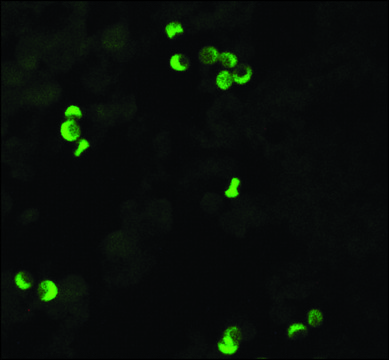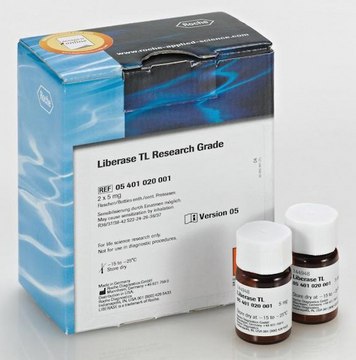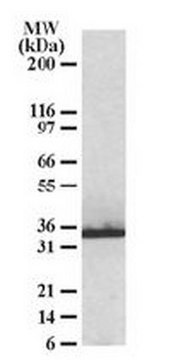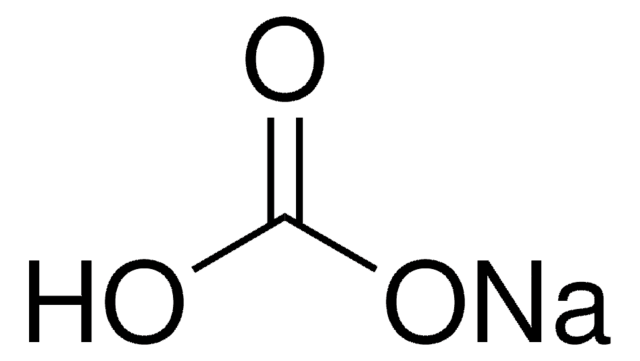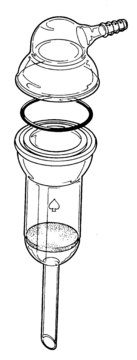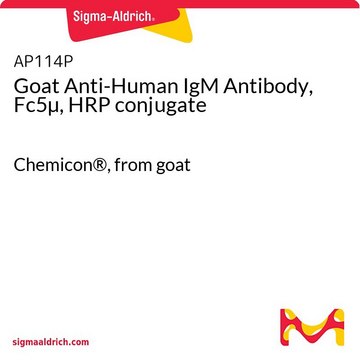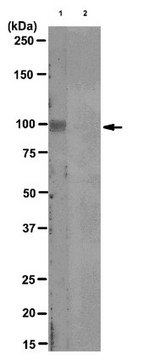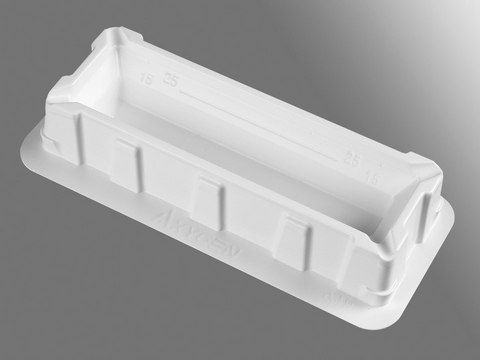MABN1783
Anti-HLA Class I Antigens Antibody, clone W6/32
clone W6/32, from mouse
Synonym(s):
HLA class I histocompatibility antigen, A alpha chain, MHC class I antigen A, HLA class I histocompatibility antigen, B alpha chain, MHC class I antigen B, HLA class I histocompatibility antigen, C alpha chain, MHC class I antigen C;HLA class I histocomp
About This Item
Recommended Products
biological source
mouse
Quality Level
antibody form
purified antibody
antibody product type
primary antibodies
clone
W6/32, monoclonal
species reactivity
human
technique(s)
affinity binding assay: suitable
affinity chromatography: suitable
flow cytometry: suitable
immunohistochemistry: suitable
immunoprecipitation (IP): suitable
neutralization: suitable
isotype
IgG2a
GenBank accession no.
NCBI accession no.
shipped in
ambient
target post-translational modification
unmodified
Gene Information
human ... HLA-A(3105) , HLA-C(3107) , HLA-E(3133)
Related Categories
General description
The previously assigned protein identifier P30443 has been merged into P04439. Full details can be found on the UniProt database.
Specificity
Immunogen
Application
Quality
Immunohistochemistry Analysis: A 1:1,000 dilutioin of this antibody detected HLA class I antigens in acetone-fixed frozen human tonsil tissue sections.
Target description
Physical form
Other Notes
Legal Information
Not finding the right product?
Try our Product Selector Tool.
Storage Class Code
12 - Non Combustible Liquids
WGK
WGK 2
Flash Point(F)
Not applicable
Flash Point(C)
Not applicable
Regulatory Information
Certificates of Analysis (COA)
Search for Certificates of Analysis (COA) by entering the products Lot/Batch Number. Lot and Batch Numbers can be found on a product’s label following the words ‘Lot’ or ‘Batch’.
Already Own This Product?
Find documentation for the products that you have recently purchased in the Document Library.
Our team of scientists has experience in all areas of research including Life Science, Material Science, Chemical Synthesis, Chromatography, Analytical and many others.
Contact Technical Service